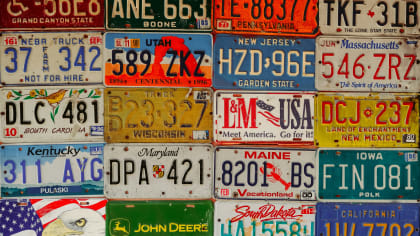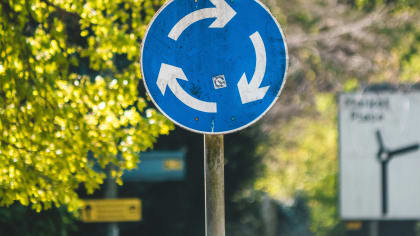TOYOTA GRAND PRIX OF LONG BEACH
The road to the Indy Lights
This article is from our archives and has not been updated and integrated with our "new" site yet... Even so, it's still awesome - so keep reading!
Published on Mon, Apr 20, 2015
By: The LACar Editorial Staff

A ROAD TO NOWHERE?
Story by Brian Kennedy, PhD
Pictures by Gabriela Moya
There is a “ladder system,” to use the preferred word, in US-based open wheel racing. A driver doesn’t just show up and strap into the big, heavy, powerful, and beautiful thing that is a modern IndyCar. He, or she, works up to it. But how?
By taking the “Road to Indy,” and if you want to be strict about it, call it the “Mazda Road to Indy,” because you’ve learned the lesson that racing is all about the corporate buck, right?
So how do you get onto the road to Indy?
Everyone knows that in NASCAR, the feeder series are the local track series, the regional NASCAR series (Whelan sponsorship), the trucks, Xfinity (formerly Busch) and then the top rung. Open wheel cars? Sad but true—only a few purists could tell you how to get to Indy. (Don’t repeat Bugs Bunny’s advice, “Turn left at Albuquerque.”)
But there is a feeder system, and it starts with the Cooper Tires USF2000, goes to Pro Mazda, and then Indy Lights. But here’s where fan confusion begins.
During the great divorce of the Indy Racing League and what called itself at various times “CART” and “Champ Car,” the ironies were multiple. The Indy Lights was still called that, and it was still intended to get people from kid to master of the open-wheel car. Only back then, the end of the road in Indy Lights was CART, not the famous 2.5-mile Indianapolis Motor Speedway. Even more odd, the big series didn’t have the rights to the name, and yet in Toronto and Edmonton (when they had a race), it was still the “Molson Indy.” So someone who couldn’t keep straight what the name “Indy Lights” signified might well have been forgiven.
Now there’s one series, IndyCar, and one way to get there, the road should be simple. Here’s how a young driver follows that road: by finding money. Perhaps his or her parents have it. It’s unlikely anyone else is going to give it to them to race in a series with only a handful of cars, very little media exposure, and a hardcore but super-tiny fanbase.
The cost to race Indy Lights, according to a team member LA Car spoke with on Sunday morning at Long Beach, is between $200,000 and $400,000 a year. That’s for a series which has 16 races. And that’s if you don’t crash. If you do, then you’ll be paying. Our source said that his team had already endured about $130,000 worth of accident damage in the new season. Whose pocket does that come out of? The driver’s. Or his parents’, in the case of most of the youngsters who race Indy Lights.
One person connected with the wheel manufacturer who supplies to the series told me that Matthew Brabham, whose grandfather is Sir Jack Brabham, was looking for about a million dollars to run the whole year. He pointed out that any time there’s more than one car, teams have efficiencies of scale. Most of the teams are multiple-car efforts. Brabham, by the way, won back-to-back MazdaSpeed championships by winning the USF2000 championship in 2012 and the 2013 Pro Mazda Championship, so he’s got a pedigree that might make him worth investing in. Still, the man said Brabham was “looking” for money. But if it’s not available to him, with a proven track record, who is it going to be available to?
Very few guys, which is why the fields are so small. Why is this a buy-a-ride series? Because there’s little value in the advertising that can be done on these cars. There’s some TV, but it’s generally not live. What does that say? That only the purists are going to watch, since you don’t have to be tuned in to see what happened. The sponsors on the cars in Long Beach reflect this, being mostly regional (Toys for Boys Miami, FamilyArtPrinting.com) or unheard of (Anderson Podiatry Centers).
So why do it? Because you have the cash, or want the thrill. And because you want to get to Indy. Prize money, our source said, goes back into the team budget, but the winner of the series gets a “scholarship” to run in the big series. But not for the whole year. This year, the Indy Lights drivers are vying for sponsorship for three races of the 2016 series, including the Indy 500. As our source said, “Those guys”—he gestured towards the IndyCar paddock—“are watching what goes on over here,” and they grab the drivers who show promise.
The Indy Lights series has been good to drivers in the past. Five former champs took the green flag for the IndyCar race in Long Beach, including Scott Dixon (2000) and Tony Kanaan (1997). The newest of them is Gabby Chaves, who won the Indy Lights race in the LBC last year. Other current IndyCar drivers who raced the series without winning it altogether include Helio Castroneves and four others.
Another way to say this: there are ten drivers in the big race Sunday who once competed in Lights. Ten out of 23. Other former drivers include the broadcasters Jon Beekhuis and Townsend Bell and Paul Tracy, so the paddock is pretty much full of former Indy Lights competitors. But get this. After Scott Dixon won the race Sunday afternoon, he was reminded that it was his first Long Beach win. Then someone said that he’d won Lights, in 2000. “That’s Indy Lights, it doesn’t count,” he said. He was not being disrespectful, nor did he say this with any malice. Rather, he was indicating that the minor leagues don’t produce memorable moments, and he’s entitled to that opinion. A lot of people share it, if they know about Lights at all.
The problem is, the Indy Lights series doesn’t attract that many drivers. The field was 12 on Sunday, including eight rookies. (There were 13 drivers in the season opener in Florida.) What does that tell you? That there’s not much of a way to sustain fan interest. There’s no real carryover momentum from one year to another, because the faces keep changing.
You could make the argument that people go to minor league (AHL, ECHL) hockey games in order to see guys who they will one day be able to see on TV in their favorite team’s uniform in the NHL, and that the same logic applies in the Indy Lights. But if that were the goal, then why are the organizers running them at 8:45 in the morning at Long Beach?
This track, along with Indy, are the longest-running and most important in the big series. The fans who attend often are generational—from parents to children, the Long Beach mystique is passed down. These people come to the race for its glamour and excitement, but also because they love the racing and the support series themselves. They even came when Long Beach had no relationship to the 500. But now it does, and so the guys they see racing on Sunday morning are the same ones they’ll see racing later in their careers on a future Sunday afternoon (and Memorial Day weekend, at the 500).
So why not make it easy for them to actually see the racing? Even the most devoted don’t get to Long Beach for 8:45 a.m. And the rest of the morning’s schedule included stuff that was mostly fluff, including a parade of classic cars under the “Mother’s” sponsorship. I love those as much as anyone, but they don’t matter as much as a series that represents the future of the best type of racing (to me and others, anyway) in the world.
Not that the series hasn’t tried to make itself more interesting. This year, the team tech told LA Car, the engines have been switched from V8s to turbo four-cylinders. The cars, in addition, are lighter. He said about 1500 pounds, wet, and that they will be much more maneuverable than they had been in the past. Additionally, they now have the “push to pass” feature that the big series does, giving the driver a boost when he or she needs to scoot past a rival. It makes the series more similar to its big brother than it would be otherwise, and is thought to be a bonus for that.
Staging exciting action, then, is possible, but the trouble, again, is that there are only a dozen cars (or at least, that’s how many did Long Beach), and when they get spread out, things get boring.
Series press material calls this year’s chassis “the spectacular new Dallara IL-15 chassis,” and brags up its 450 horsepower engine, Mazda-branded, and its seat, which is capable of fitting into both the IndyCar and Indy Lights series cockpits. The series, it seems, believes in its ability to seem relevant and interesting and to take a driver from minor leagues to Majors.
On track action bears out the claim to excitement. Speeds for the field are remarkably tight. The slowest car in qualifying for Long Beach was about three seconds off the fastest one, but even at that, the slowest guy (Shelby Blackstock, who is Reba McEntire’s son) was off the qualifying track record by just a couple of seconds. That was held by Carlos Munoz from back in 2013 but reset this year by the pole sitter, Jack Harvey.
Harvey would have won the race, too, but for an early incident. He hit the wall in turn one along with the No. 18 car of Kyle Kaiser, who started third. Ed Jones jumped into the lead from fourth.
But herein lies the problem of small fields—they can lead to races in which there is no action.
O didn’t understand the rules. To be honest, I wasn’t sure what he was doing. I wasn’t even on the power. It wasn’t even a challenge. Like I said, he didn’t understand the rules, so . . . .” He was referencing Felix Serralles, who, by his own admission, didn’t know that he should go when he glimpsed the green flag, rather than the way they do it in Europe, which is that drivers wait for the leader to go.
In one sense, it didn’t matter if the race was boring or thrilling. The latter type of race would have been wasted on the tiny handful of spectators anyway. The drivers don’t talk like that, though. Ed Jones told LA Car about his race, speaking in passionate and specific terms. He said that the technology of the cars is so advanced that, while the cars run mostly in third gear, the rpms don’t vary much.
“The hairpin onto the main straight,” he added, “Is first gear” in Long Beach. He went on to say that the looping final turns were difficult, especially as the tires got worse. “As you go into turn nine, your car can be a bit understeer-y on the rest of the circuit, but you get oversteer on turn nine. When the tires go away, your handling gets worse and worse, and you’re really having to fight with the throttle and the steering to keep it off the walls.”
He did say that he or any of the guys in his series would do well if they ended up in a big IndyCar. “After a test, we’d be right there,” he said.
The race as it proceeded had eight cars, though a ninth, which had gone to the pits early, rejoined in the later going, many laps back. The excitement was between the first and second cars, and then for spots 3-4-5. The few fans around seemed riveted, and in the pits, a large group of people, probably those associated with the teams, watched the big screen that displayed the action. They gasped when the front two cars got close. But that left me thinking how great it would be if only more were sharing their interest.
Solutions? Put the race at a better time on the Long Beach weekend. Get more people interested, who would perhaps watch more intently on TV on other weekends, and hope that that leads to more dollars flowing in. More dollars means more cars, and that, in a nutshell, is what modern racing is all about.
The series for the year stages 16 races, as was mentioned, but on six of their weekends, they race twice, so the schedule isn’t as full as it seems. One good thing for fans lamenting the fact that racing is over all too soon (IndyCar doesn’t even make it to September this season) is that Indy Lights runs its final races on September 10-13th, at Mazda Raceway Laguna Seca in Monterey, California.
The Road to Indy is paved with good intentions and cash, and the Indy Lights series is a big part of that. But the races themselves deserve better than what they got at Long Beach. Only if fans know the series and can easily see it will it grow, and growth would feed back, in turn, into interest. That way, the road doesn’t have to go nowhere.

RACE STATS Jones made 42 laps in the one-hour time limit of the race. Seven cars in total did the full race distance. Juan Piedrahita got in 37, Shelby Blackstock 33, and two others a handful. Harvey ended up completing 15. The winner’s average speed was 87.293mph, and his best lap was a 1.13. The best lap of the race was turned in by the third-place finisher, Serralles, who cracked into the 1.12 range. He was at 1.12.909, nearly a full second faster than the second place guy and second-fastest lap poster, Spencer Pigot. The victory by Jones was gained by .6131 of a second, with Serralles 1.82 down in third. But there’s where the fun stopped. RC Enerson, in fourth, was down by 12 seconds, though just ahead of the fifth-place guy, Max Chilton, who was -13. There were just two leaders, Serralles and Jones, and the lead changed twice officially. Two cautions took up four laps in total. Both were for contact. Jones led the final 40 laps. [nggallery id=indylights2015]




